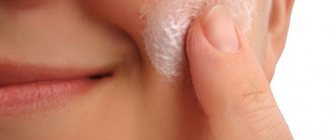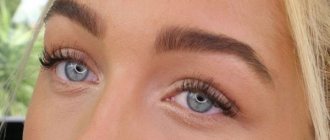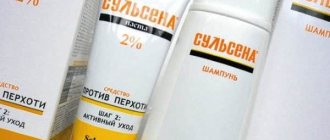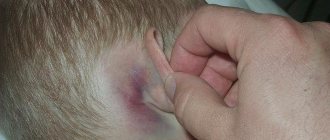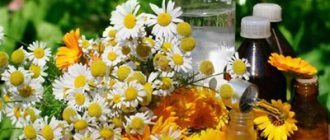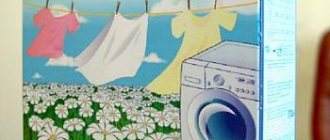Atopic dermatitis is a complex disease that requires careful specialized treatment and constant skin care. Its exacerbation is characterized by redness of the skin, the formation of dry flaky crusts, and sometimes a rash. Treatment of the disease involves an integrated approach, including the mandatory use of emollients for atopic dermatitis in a child.
What are emollients and their role in the treatment of dermatitis
Emollients for children are products for external use that do not contain harmful substances (dyes, fragrances) and help quickly relieve itching, burning and irritation on the skin.
Emollients contain fatty components, thanks to which a protective film is formed on the skin and pathogens (bacteria, viruses) do not spread or multiply.
The use of emollients to prevent atopic dermatitis reduces the likelihood of its occurrence by 75%.
The meaning of the drugs is as follows:
- Soften the skin and moisturize;
- Block the entry of pathogenic organisms from the environment;
- Reduce inflammation;
- Helps retain moisture;
- Prevents the formation of microcracks on the skin;
- Relieves symptoms of dermatitis: itching, burning, irritation.
Why are emollients needed?
The fact that infants have thinner and more delicate skin than that of an adult is visible to the naked eye.
Due to this feature, it is more susceptible to irritation and the influence of environmental factors, which leads to diaper rash, seborrheic crusts, atopic dermatitis and other unpleasant phenomena. It is now known that in children with atopic dermatitis, among other things, the barrier function of the skin is impaired due to a lack of lipids and filaggrin protein. The skin of such children is prone to dryness (which in itself is an unpleasant sensation - tightness, itching, flaking), the appearance of microcracks and the development of bacteria, since entire colonies of various microorganisms live on the skin of any person and as soon as the barrier functions of the skin fail, they begin to active reproduction, which leads to exacerbation of atopic dermatitis.
Thus, if you constantly maintain the protective layer of your baby’s skin in normal condition, you can significantly reduce (and sometimes completely eliminate) the manifestations of atopic dermatitis. One of the main products that have such a supporting effect are emollients - substances that soften the skin. They artificially create a lipid film, restoring the damaged surface of the epidermis and, as a result, its barrier function, which significantly reduces dry skin and eliminates itching. It should be remembered that emollients will not replace anti-inflammatory treatment for atopic dermatitis, but they are a necessary addition to it.
Since there is currently a huge selection of emollients on the market (the most popular series: Emolium, Mustela Stelatopia, Lipikar AP+, Locobase Ripea, Lipobase, AVÈNE, Topicrem), let’s try to figure out how they differ, how to choose the right one and how to use it correctly to achieve maximum effect.
What are emollients?
Emollients are available in the form of ointments, creams, emulsions, lotions, shampoos, bath products, balms and nourishing milk.
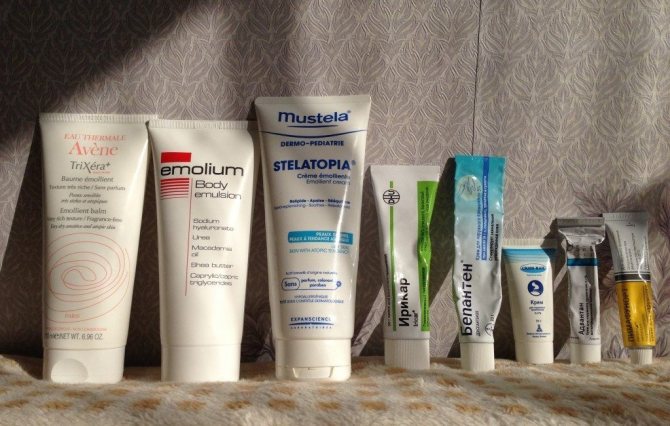
Various types of emollients
There are also natural emollients with a hypoallergenic composition, chemical (made from silicone, petroleum jelly, paraffin) and synthetic.
For infants, the preferred option is always natural emollients. Each type has both pros and cons.
What are emollients
Emollients are commonly called fatty components present in products whose main purpose is to care for the skin.
The content of such substances in cosmetic preparations helps to distribute them evenly throughout the baby’s body.
After such cosmetics are applied to the child’s body, the baby’s skin becomes soft and moisturized.
Today, these substances are divided into three groups, which indicate their origin, that is, they can be:
- Chemical, which are based on petroleum jelly or paraffin.
- Synthetic ones that are produced in laboratories.
- Herbal, which are produced on the basis of medicinal herbs or plants.
These components are included in cosmetics such as ointments, creams, soaps, balms and shampoos.
If the baby’s skin is seriously damaged due to illness, then experts recommend using an ointment or cream that contains these components.
Advantages and disadvantages of emollients
Natural emollients contain vitamins and beneficial microelements, oils and plant extracts. They are effective, do not cause allergies and are well suited for children under one year old, act quickly, and maintain lipid balance.
Disadvantages include high cost, as well as the inability to cope with a large affected area.
The other two groups are cheaper, effective in eliminating symptoms in extensive lesions, but can increase symptoms if allergies or side effects occur and cause clogged pores.
Also, all emollients have a big drawback: they block oxygen access to the skin.
In what cases, besides atopic dermatitis, should emollients be used?
- Emollients can also be used for healthy skin, especially if the skin is exposed to traumatic factors.
- Emollients are used for psoriasis and eczema in adults and older children.
- For babies, emulsion or milk can be applied to soften crusts on the scalp with siborrhoeic dermatitis. After bathing the baby, the head is treated with a cosmetic product and then carefully combed out with a soft brush. If necessary, this procedure can be repeated several times.
Online consultation with a pediatrician
consultation cost: 500 rubles
Online consultation
During the consultation, you will be able to voice your problem, the doctor will clarify the situation, interpret the tests, answer your questions and give the necessary recommendations.
Can emollients be replaced with baby cream?
Baby cream is not an analogue of emollients and is not capable of providing the desired effect. It may provide temporary relief, but does not eliminate the symptoms of atopic dermatitis.
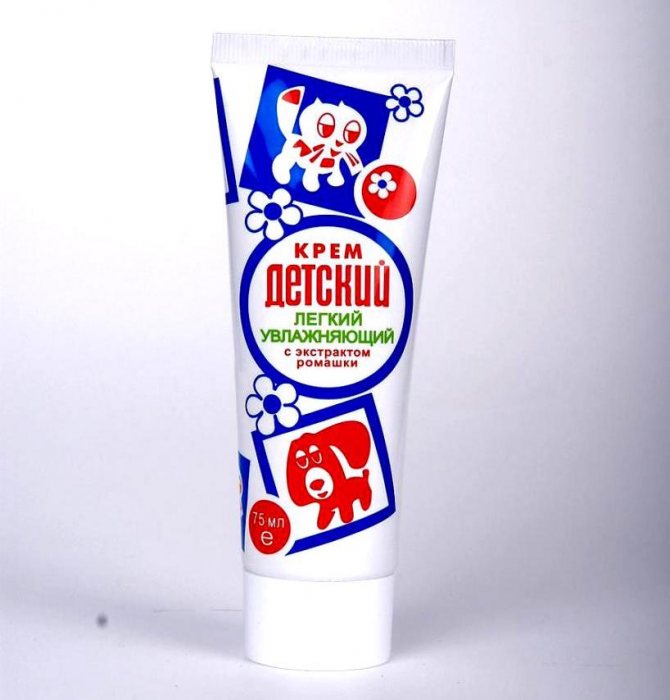
It is not recommended to use baby creams instead of emollients
In addition, the use of baby cream can be fraught with a number of consequences:
- Allergic reaction due to individual intolerance to the components;
- Deterioration of the lipid layer of the skin.
Baby cream contains harmful components, is poorly absorbed, but is easily washed off, so it cannot replace emollients.
Types of emollients
Natural (plant and animal)
These products are usually based on oils and/or waxes of natural origin. The most commonly used components are:
- Peach and olive oils: contain many biologically active substances that have a positive effect on the skin, in particular, soften it, increase elasticity, protect against external negative factors, and also eliminate dryness. It is worth noting that these components, like all natural oils, leave a greasy film.
- Jojoba Oil: From a chemical point of view, it is not an oil at all, but a natural liquid wax obtained from the Simmondsia chinensis plant. It spreads very easily over the skin, moisturizing it and forming a protective film that retains moisture.
- Lanolin: An animal wax obtained by boiling sheep's wool. It forms a fatty film on the skin that retains moisture, perfectly relieves the symptoms of dryness and nourishes the epidermis. Currently, lanolin derivatives are more common - lanolin oil and lanolin alcohol.
- Squalene: A liquid hydrocarbon found in sebum, shark liver and olive oil. It perfectly softens the skin and also has protective properties.
It is worth noting that natural-based drugs are considered the safest for the body, but they are quite allergenic, so before using them you should make sure that they will not cause unpleasant reactions.
Synthetic
These products are based on fatty acids, esters and other components obtained synthetically. As a result of chemical reactions, biologically inert substances are formed that remain on the surface of the skin, without irritating it, but forming a protective film. The likelihood of an allergic reaction to such products is much lower than to natural ones. Another “plus” is that they practically do not leave behind a greasy effect.
Chemical
This category includes products based on paraffin, petroleum jelly and/or mineral oils, which are considered chemically and biologically neutral - they are not absorbed into the skin, are not absorbed by its cells, but at the same time are capable of creating a protective film that prevents the evaporation of moisture and limits the negative influence of the environment on the skin.
Emollients of chemical origin are considered a cross between natural and synthetic products.
How to choose emollients for atopic dermatitis
Currently, the choice of emollients is very wide, so you need to understand how to choose the most effective option.
- First of all, you need to study the composition and understand whether it contains components to which the child is or may be allergic.
- For newborns, infants and children with allergies, it is better to choose natural emollients and not skimp on them.
- Emollients with a delicate structure are more suitable for babies: milk, emulsions;
- Creams are the best way to moisturize the skin: this is the form you should choose for cracks, peeling and itching.
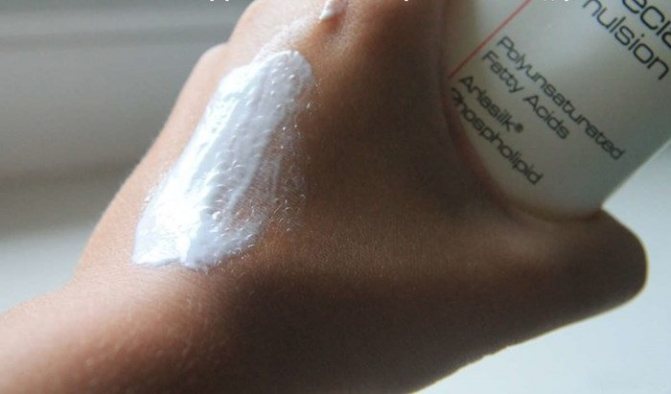
Emollients in the form of creams are ideal for moisturizing the skin.
Recommendations for use
Usually the correct frequency of use is determined by the doctor, but besides this there are other points that are important to know in order to achieve the greatest effect:
- The product must be applied not only to the affected areas, but also to the entire body to prevent the spread of the disease;
- The optimal frequency of use depends on age and severity of the disease. On average, it is better to apply the product 3-5 times a day;
- It is better to apply emollients immediately after bathing;
- More doesn't mean better. The skin should be lubricated with a thin, neat layer, and in places where blisters, bubbles, or scabs are particularly concentrated - with a thick layer;
- Emollients should be used not only during exacerbation, but also during remission;
- It is better to buy several emollients at once and alternate them to avoid addiction.
Release forms of emollients
When choosing an emollient, first of all you need to decide on its form, since it is different for each stage.
most effectively restore the damaged hydrolipidic layer of the epidermis .
Ointments are the densest in texture, consist of mineral oils and contain virtually no water, while perfectly softening the skin and creating a protective film on it. They are preferable to use on very dry, cracked, thickened areas of the skin (emulsion will not cope with this task).
Ointments should not be used during the acute stage of atopic dermatitis, or applied to the area of folds, since a “greenhouse effect” may occur with the formation of diaper rash and weeping.
Creams are also quite strong emollients, but contain significantly less fat than ointments, so they are easier to apply and absorb faster.
Due to the peculiarities of their composition, lotions Therefore, they are used only on wet areas. As soon as the inflammation is relieved and the weeping disappears, you should choose a different form of emollient.
During the period of remission (or with slight dryness), on the scalp, as well as during the hot season, it is worth using an emulsion or milk. Due to their light texture, they allow the skin to breathe.
TOP 10 most effective drugs
List of the best emollients for atopic dermatitis in children according to pediatricians.
Oilatum

Paraffin-containing cream, available in a convenient bottle. Suitable for children of any age, does not cause side effects.
Emolium
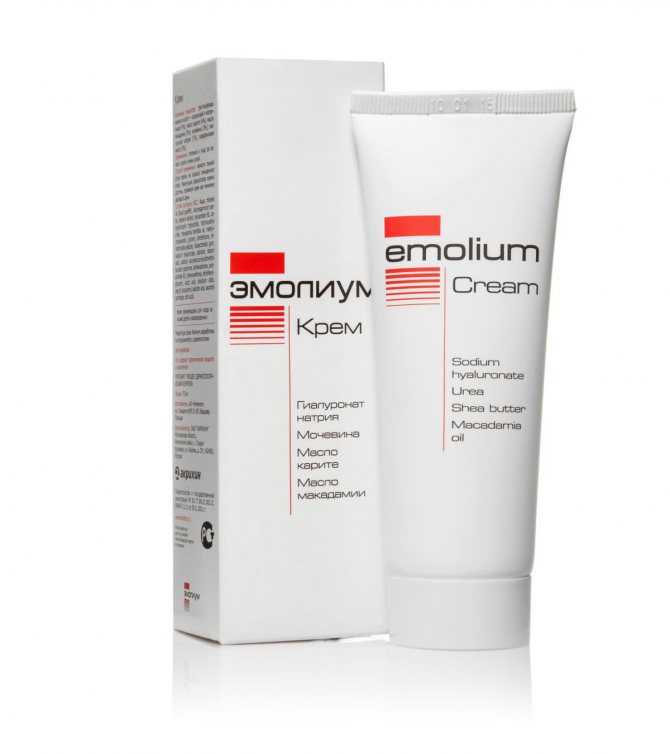
Available in the form of shampoo, cream, emulsion. It can also be used at any age, but you need to monitor the skin reaction, because... side effects occur.
Mustela
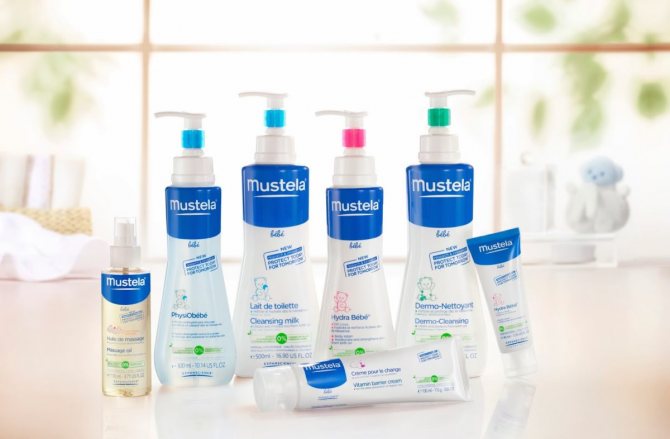
You can find a bathing product, a cleansing mixture and an ointment. Any of these drugs copes well with the signs of atopic dermatitis, especially if it manifests itself in the form of dryness, cracking, and itching.
Safe for babies, but may be addictive.
Losterine

The cream quickly relieves the symptoms of dermatitis, promotes skin regeneration, and has an antibacterial and disinfectant effect.
Suitable for newborns.
Topicrem

. An emulsion that has an anti-inflammatory effect. Creates a film on the skin, maintains water balance, moisturizes and softens the skin.
Suitable for dry dermatitis only.
Emolium
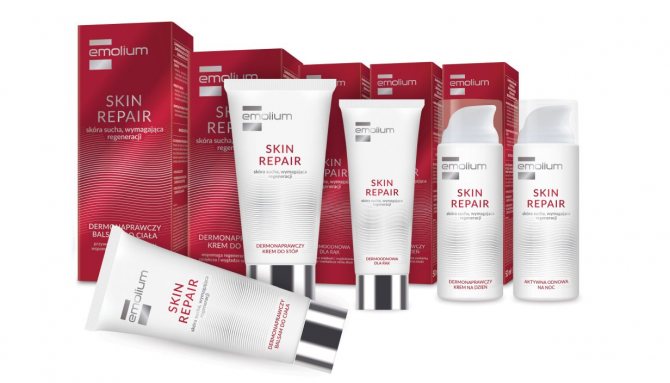
is available in various forms, has a beneficial soothing effect on the skin, relieves symptoms of dermatitis, and is not addictive.
Dermalex

cream that can be used at any age works better on weeping wounds.
FreeDerm
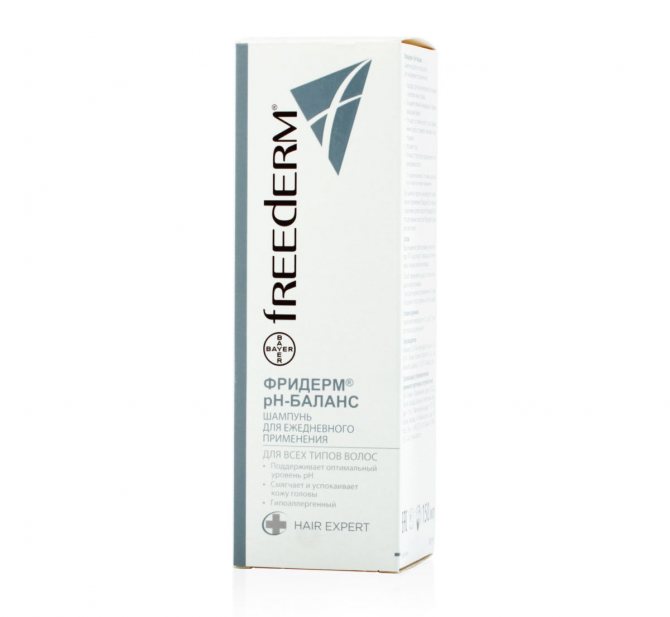
Freederm shampoo is suitable for the treatment of dermatitis in children, used 2 times a week.
AVENE TRIXERA
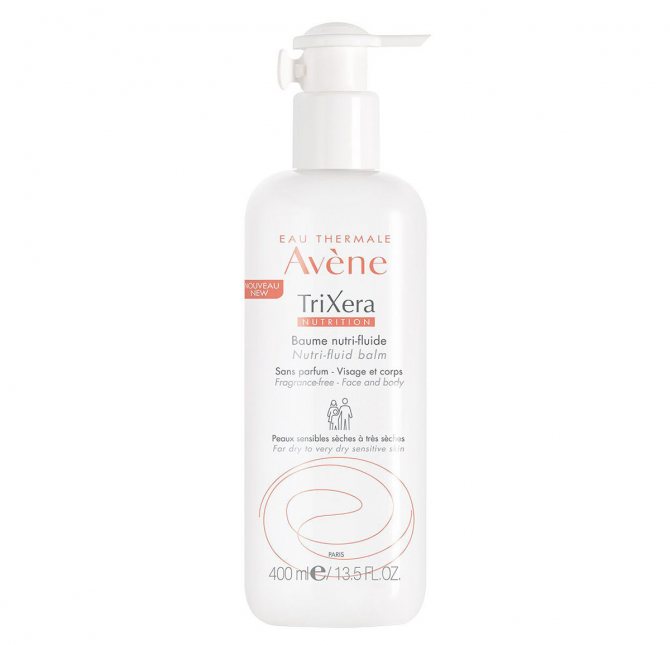
can be used from three months of age. Available in the form of cream, emulsions, gel, balm.
Locobase
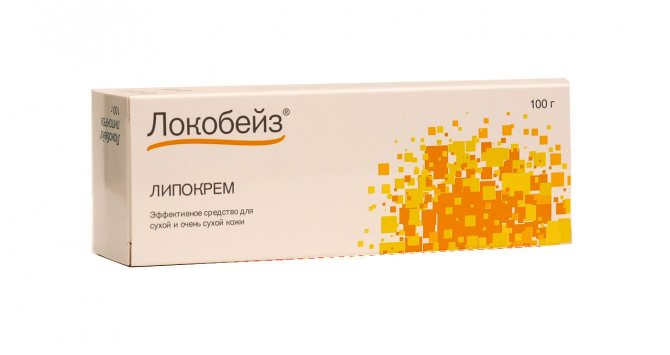
Soft cream, suitable for children over 12 years old.
Which product is better to buy?
As can be seen from the rating of the presented products, among budget and expensive products there are good creams and emulsions. The low price does not compromise the quality and dignity of the care products, but more expensive options also have their advantages.
All emollients are designed for long-term use, so you may not see immediate improvements with one or two uses. Treatment of chronic skin diseases is a long process. Despite the fact that all emollients are hypoallergenic and meet all requirements and standards, a child may have an individual intolerance to any component. Therefore, when purchasing and further using a new product, you must carefully monitor the reaction of your baby’s skin.
Be careful when choosing moisturizers, be sure to consult your doctor, and choose the right care to alleviate the condition of your child’s skin and not harm it.
Health to your kids and happy shopping! Thanks to All.ru in Yandex Zen.

Precautions and contraindications
To get as much benefit as possible from the use of emollients, you need to follow a number of rules:
- Carefully study the expiration date;
- Choose a product based on the instructions on the package regarding age and read the “contraindications” section;
- Before using emollients, consult a doctor to know the exact diagnosis;
- Do not apply the product too often or in too thick a layer;
- Do not allow drugs to get into your eyes or mouth;
- To avoid addiction, emollients should be changed at least once a month.
Atopic dermatitis in children must be treated comprehensively: a special diet must be followed.
What contraindications might there be for this or that product?
- Age restrictions;
- Individual intolerance to components;
- Presence of concomitant diseases;
- Inability to use the drug for weeping eczema;
- Skin hypersensitivity.
What are the benefits and harms of using
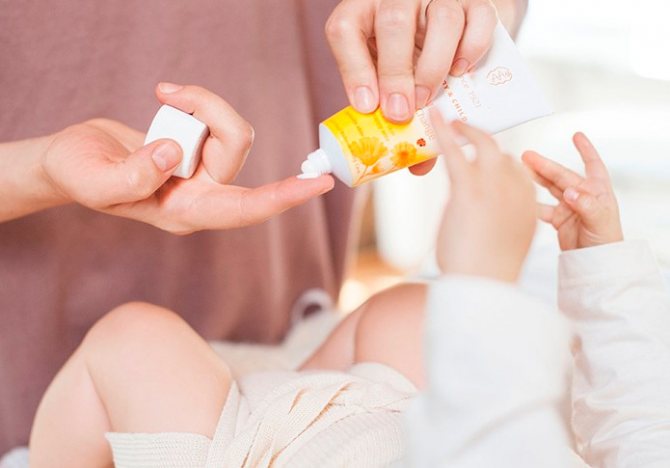
Emollients have many more positive qualities than negative ones. Nevertheless, it is necessary to treat a child with their help under the supervision of a doctor (especially infants).
List of advantages:
- retain moisture in the skin, making it softer, firmer and more elastic;
- promote the processes of regeneration of epithelial cells, restoration of the structure of the epidermis;
- protect the skin from the introduction of various infectious agents (bacteria, fungi, viruses);
- get rid of dead epidermal cells;
- harmless and hypoallergenic (practically do not enter the bloodstream);
- The list of drugs is impressive.
There are three significant disadvantages:
- with frequent or incorrect use, pores may become clogged, which leads to complications;
- since the substances are poorly absorbed, they can stain children’s clothes and hands if they begin to wash them from the application sites;
- the risk of microbes entering the container with the drug, which is prevented by the use of disposable spatulas.
We must not forget about special cases of individual intolerance to certain components. You should not use emollients on healthy skin. Despite their safety, there are clear indications for their use.
Reviews from moms about emollients
Many parents share their impressions of the use of certain emollients and discuss them on forums. We have provided some reviews here.
Elena: “We encountered atopic dermatitis when my son was almost 3 years old. We immediately went to the doctor and went on a diet. The doctor advised me to buy two emollients in different release forms, preferably hypoallergenic. We settled on Mustella and Losterin. We washed with shampoo twice a week, and rubbed the cream on the child in the mornings and evenings. The very next day the redness noticeably disappeared, but we were recommended to undergo a course of treatment - 5-7 days. After the symptoms have passed, I use the cream once a week for prevention: I apply it to my son’s hands, tummy and legs.”
Valentina: “I have twins, and both of them developed signs of atopic dermatitis after the introduction of the first complementary foods. The doctor prescribed Oilatum to be applied to the affected areas several times a day. During the period of exacerbation it was necessary to smear 6-7 times a day, after the symptoms disappeared, it was reduced to 2 times a day. This product helped very well, I recommend it!”
How to choose an emollient?
The first thing you need to decide on when choosing an emollient is its form, which depends, as discussed above, on the stage of the disease and localization.
Further, the situation is more complicated, since emollient can only be selected experimentally. Sometimes even the most expensive and seemingly best products are not suitable (ineffective or even worsen the skin condition) for a particular child. In this regard, it seems irrational to buy a large package at once. It is better to collect different samples and experiment. Despite the manufacturer’s assurances that such products are hypoallergenic, individual reactions cannot be ruled out. Therefore, before applying emollient to the entire body, you should test for skin reaction: apply the product to a small area and wait at least a day, observing the reaction.
When choosing emollients, you should also remember that they must be developed and produced using modern high technologies, taking into account the special requirements for products for caring for the delicate skin of a baby. In addition to the usual check of the shelf life of the drug, you should pay attention to what stage of atopic dermatitis it is used for, as well as age restrictions on its use.
In order for the chemical composition of hygiene and subsequent skin care products to be compatible, it is advisable to use products from the same brand.
Features of the use of emollients in adulthood
As is known, in most cases, atopic dermatitis disappears on its own after adolescence. However, in some people the disease progresses and does not go away over the years. If atopic dermatitis is observed in adulthood, then most likely we are talking about a severe form of the disease, which is accompanied by disorders of other organs and systems.
If an adult suffers from this disease, his skin constantly requires specialized care. And if you do not adhere to certain rules for maintaining healthy skin, relapses will occur more often, and getting rid of the rash will become increasingly difficult. This is why doctors recommend using emollients on an ongoing basis. For this purpose, medicinal cosmetics are suitable, which are selected individually.
Such cosmetics are distinguished, first of all, by the fact that they do not contain sulfates and parabens, are hypoallergenic and are developed by dermatologists and cosmetologists. For basic care and maintaining normal skin condition, in most cases it is enough to use shampoo and shower gel, which is intended for atopic skin. Additionally, you need to moisturize the skin with emulsions, balms and ointments 2-3 times a day.
Since atopic dermatitis is a disease that can be classified as a pathological condition of allergic origin, it is always necessary to exclude the possibility of developing hypersensitivity reactions. To do this, before using this or that product, an allergy test is carried out: a small amount of the drug is applied to the back of the hand and the condition of the skin is observed for 30-35 minutes.
Emollients are drugs that play an important role in the symptomatic treatment of atopic dermatitis, both in children and adults. With the correct selection and use of these drugs, you can not only remove unpleasant symptoms, but also avoid exacerbations, as well as complications such as secondary infection. To select the correct drug, you need to consult a dermatologist - in this case, the likelihood of incorrect use of emollients is reduced significantly. Read a review of ointments and creams for atopic dermatitis here.
Reviews of emollients from consumers
I used Atopic in the fight against dermatitis and am very pleased. The doctor prescribed it to me, it has a pleasant texture and does not have a characteristic medical smell. In one day the redness disappeared, and in two days the itching and intense peeling disappeared. Grade:
Tamara, 23 years old
The wife noticed redness on her daughter’s body in the diaper area - she showed the child to the doctor, and he noted that it was dermatitis. I prescribed La Cree for cream - I was impressed by the natural composition, and the effect was good. After 2 weeks, the inflammation went away, not a trace remained, and the itching and redness in the child went away even earlier. Grade:
Igor, 28 years old
As a mother of three children, in the fight against dermatitis, I would put Aven Trixer cream in first place - it is, of course, a little expensive, but the effectiveness and benefits are worth it. I recommend. Grade:
Irina, 34 years old
The doctor diagnosed my grandson with atopic dermatitis when the baby was only 2 years old. The child slept poorly and cried, his body became covered with cracks and his skin became dry. The pediatrician recommended Mustela Stelatopia emulsion - thank you, it helped, showing a quick effect. Grade:
Sveta, 44 years old
For the first time I encountered signs of such an unpleasant disease as atopic dermatitis - an unpleasant thing, the whole body itched, itched and peeled. The doctor prescribed medications - creams and bathing products from the Emolium series. Everything was gone in 3 weeks. Grade:
Valeria, 31 years old
In conclusion, it is worth saying that when diagnosing an atypical form of dermatitis, treatment should begin immediately and emollients in the course of therapy are its effective and efficient element.
